 |
 |
 |
| |
Intramuscular Sotrovimab Noninferior to IV for Mild/Moderate COVID
|
| |
| |
2022 CROI, February 12-16 and 22-24, 2022
Mark Mascolini
Intramuscular (IM) sotrovimab, a neutralizing monoclonal antibody active against COVID-19, proved noninferior to intravenous (IV) sotrovimab in preventing progression of mild or moderate SARS-CoV-2 infection [1]. There were no treatment-related serious adverse events in this phase 3, randomized, open-label trial [2], and few infusion- or injection-related reactions.
A previous double-blind, placebo-controlled trial found that a 500-mg infusion of IV sotrovimab cut the risk of hospital admission or death from any cause by 79% in adult outpatients with mild or moderate COVID-19 and at risk of progression [3]. This monoclonal antibody is active against SARS-CoV-2 “variants of concern,” including the Delta and Omicron variants.
To make sotrovimab more widely available, the developers created both IV and IM formulations. The COMET-TAIL trial tested the noninferiority of IM to IV sotrovimab in outpatients at least 12 years old with mild or moderate COVID-19 but at high risk for progression (age 55 or older or with a major comorbidity such as diabetes, obesity, chronic kidney disease, chronic lung disease, or chronic liver disease) [1,2]. The primary endpoint was hospital admission for more than 24 hours for acute management of illness or death from any cause through day 29. The researchers set a 3.5% noninferiority margin on the risk difference scale. They administered IM sotrovimab as two 4-mL injections in bilateral dorsogluteal muscles.
The analysis included 382 people randomized to 500 mg of IV sotrovimab and 379 randomized to 500 mg of IM sotrovimab. Respective median ages were 51 and 52, with respective proportions of 58% and 50% female at birth, 95% and 94% white, 4% and 4% black, and 82% and 85% Hispanic. Almost two thirds in each study arm were obese, 16% and 18% had a history of chronic lung disease, and 30% and 32% had 2 or more COVID progression risk factors.
At day 29 numbers (and %) in the IV and IM groups admitted to the hospital for more than 24 hours were 5 (1.3%) and 10 (2.7%), while numbers (and %) of deaths were 0 and 2 (0.5%). These results yielded an IM vs IV risk difference of 1.07 (95% confidence interval -1.25 to 3.39), and that difference established the noninferiority of IM to IV sotrovimab.
Similar low proportions of participants in the IV and IM groups had any adverse event related to study treatment (2% and 1%), any infusion- or injection-related reaction (under 1% in both groups), any grade 3 or 4 adverse event (1% in both groups), any serious adverse event (under 1% and 1%), any serious adverse event related to study treatment (0 in both groups), any disease-related event (4% and 3%), and death (0 and under 1%).
All but 1 injection-site reactions with IM sotrovimab were grade 1 or 2; tenderness was the single grade 3 event. While 33 people reported injection-related pain, 28 felt tenderness, 1 had erythema or redness, and 6 had induration (hardness) or swelling.
The researchers expect that availability of IM sotrovimab will widen access to people needing urgent treatment for COVID-19.
References
1. Shapiro AE, Sarkis E, Acloque J, et al. Intramuscular sotrovimab is noninferior to intravenous sotrovimab for COVID-19. 2022 CROI, February 12-16 and 22-24, 2022. Abstract 102.
2. ClinicalTrials.gov. Intramuscular VIR-7831 (sotrovimab) for mild/moderate COVID-19. ClinicalTrials.gov identifier NCT04913675. https://clinicaltrials.gov/ct2/show/NCT04913675
3. Gupta A, Gonzalez-Rojas Y, Juarez E, et al. Early treatment for Covid-19 with SARS-CoV-2 neutralizing antibody sotrovimab. N Engl J Med. 2021;385:1941-1950. doi: 10.1056/NEJMoa2107934. https://www.nejm.org/doi/10.1056/NEJMoa2107934
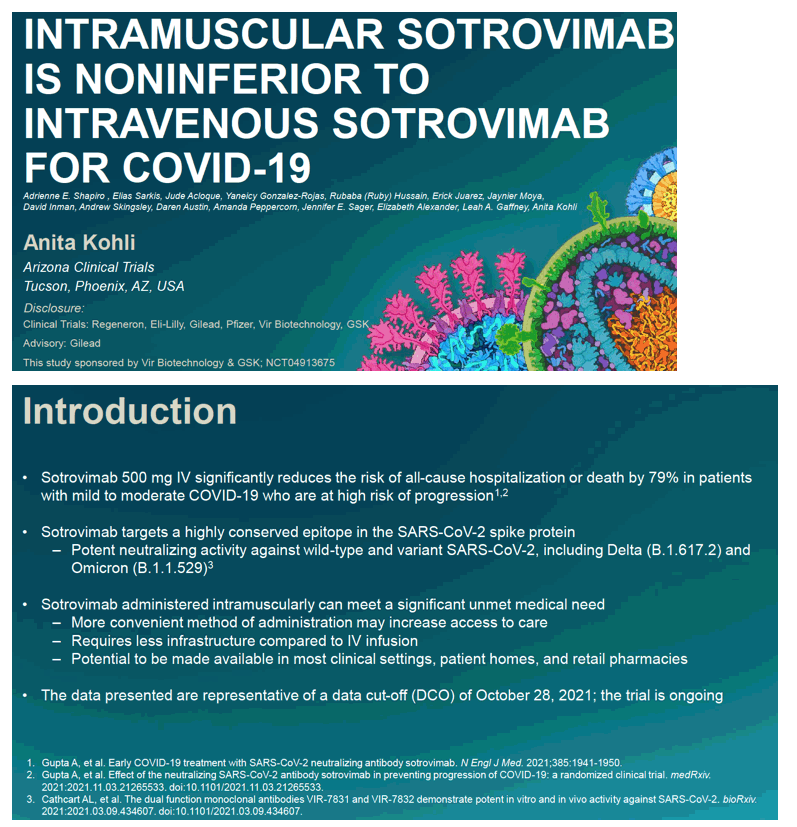
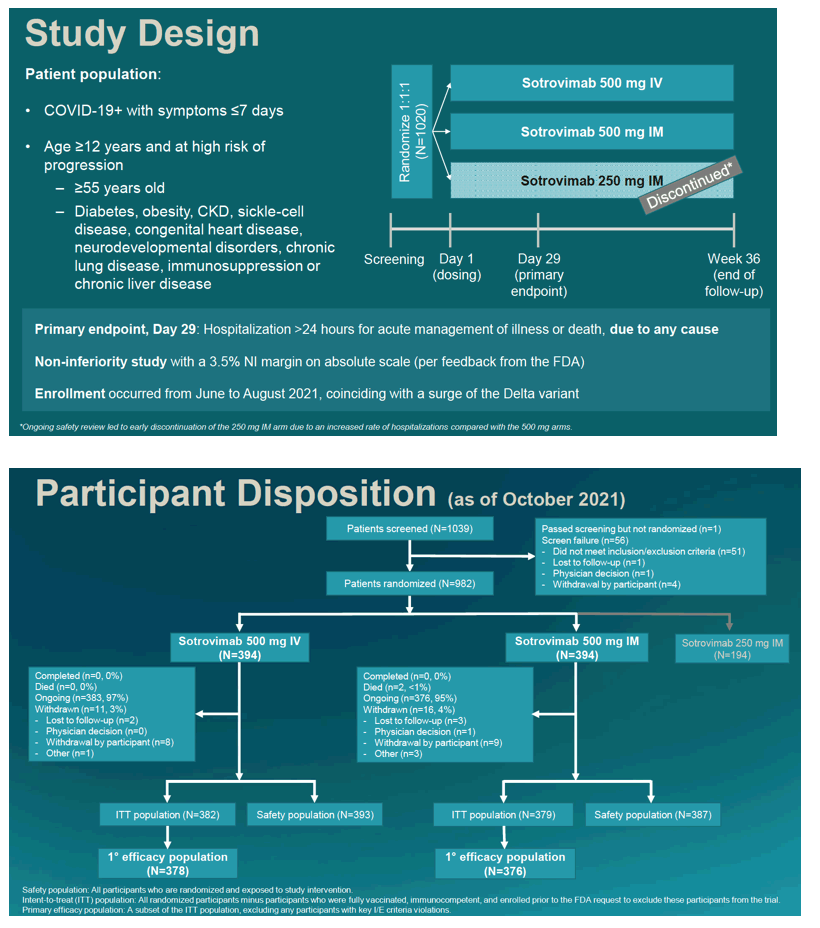
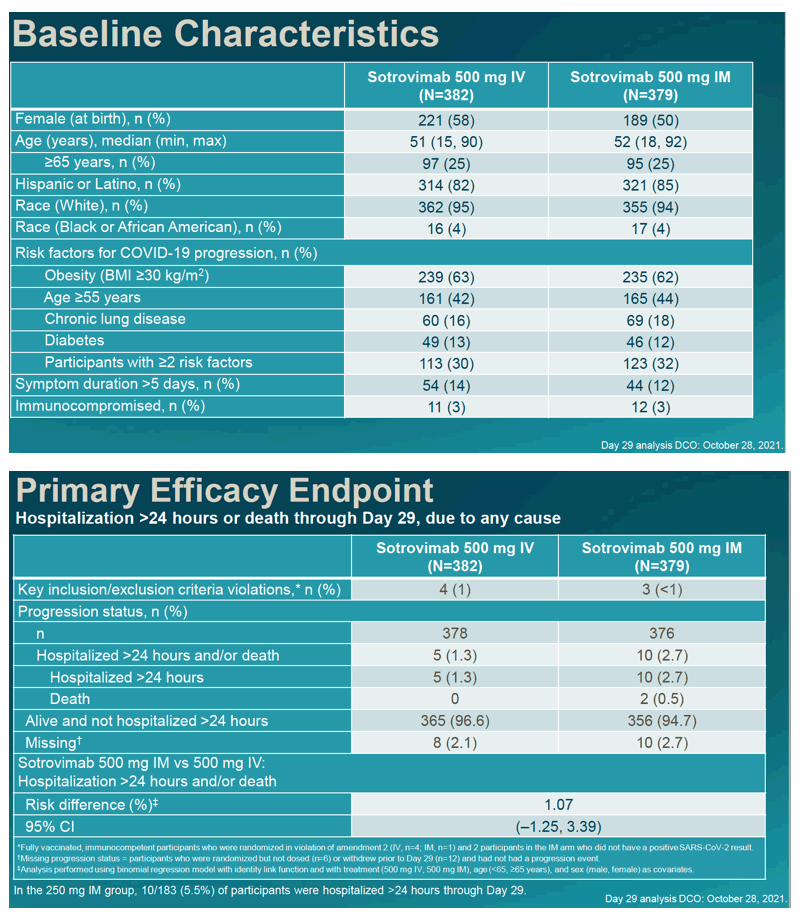
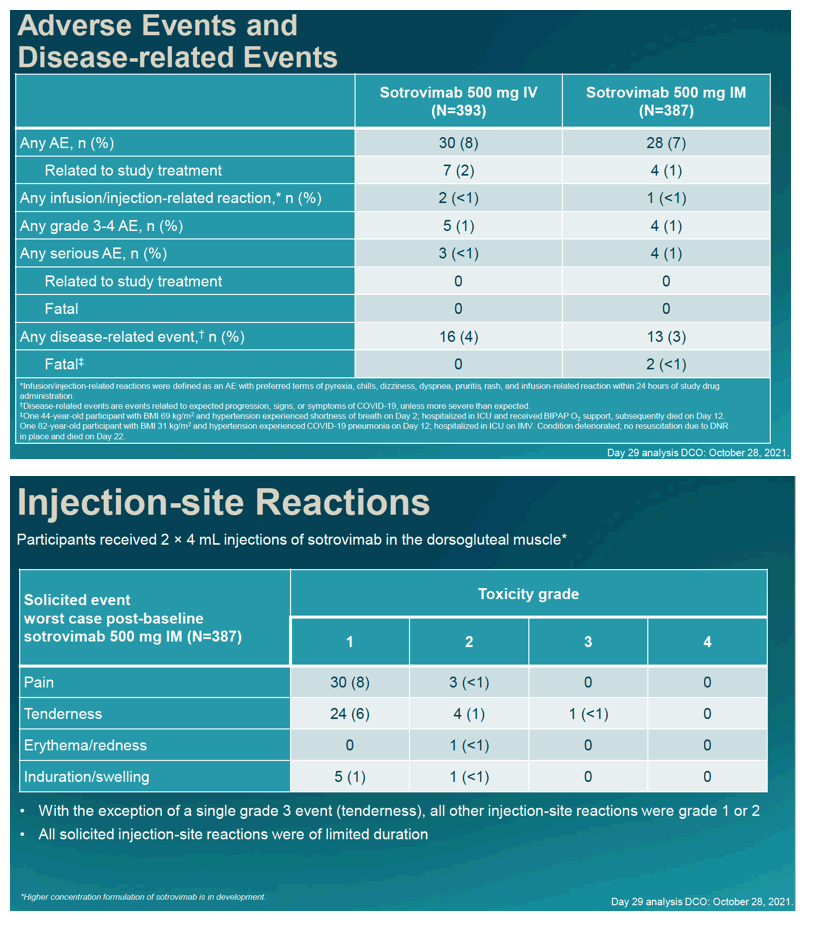
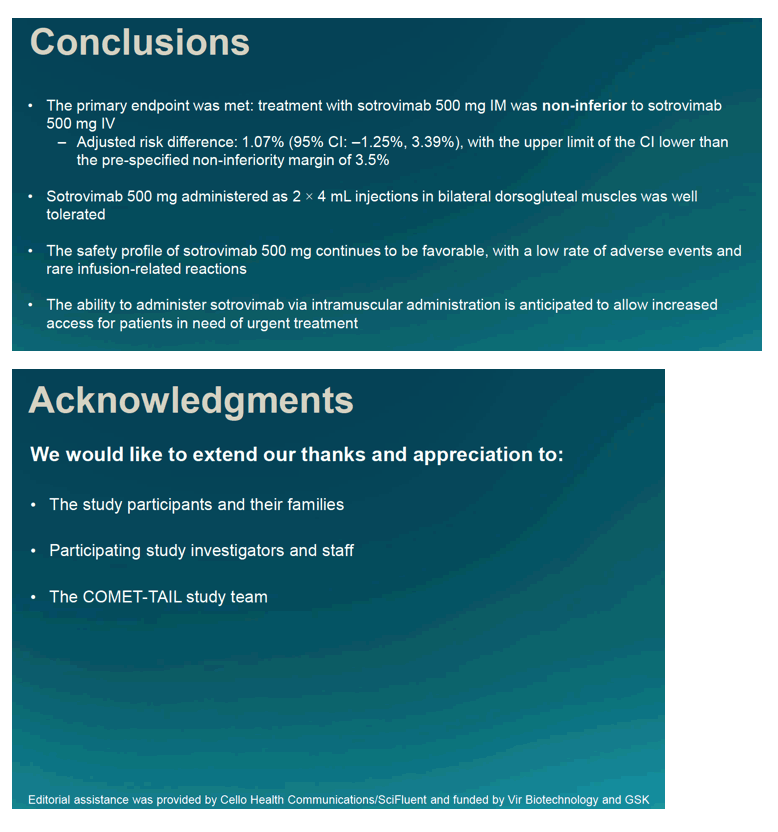
|
| |
|
 |
 |
|
|